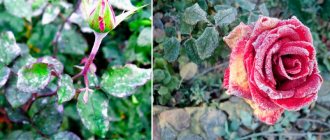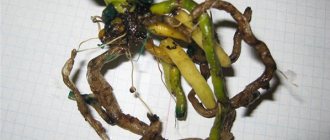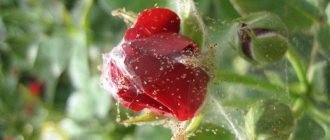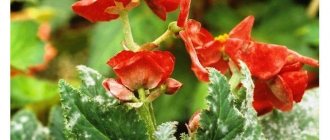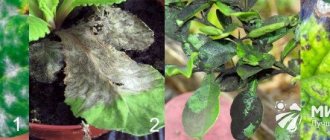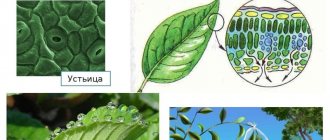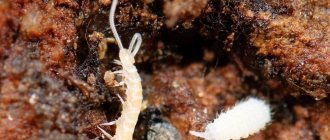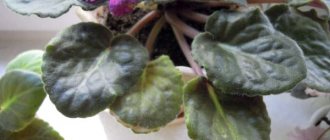Powdery mildew is a rapidly spreading fungal plant disease. Initially, a white powdery coating appears on the leaves, similar to flour or powder. It can be easily wiped off with your finger and even mistaken for ordinary dust. But it was not there! Before you know it, this infection will appear again, and in greater numbers, capturing ever new areas of habitat. Not only the leaves become white, but also the stems and flower stalks. Gradually, old leaves turn yellow and lose turgor. New ones grow ugly and twisted. If measures are not taken to cure powdery mildew, the plant will die.
What is powdery mildew
All gardeners know diseases of garden plantings, shrubs and house flowers. Many people fight them every year; others manage to defeat the pests in a few weeks. Unfortunately, garden owners often encounter a plant disease - powdery mildew (other names - ash, white, flour).
It affects garden trees, shrubs, vegetable crops (zucchini, squash, cucumbers, tomatoes, onions, pumpkins), as well as many flowers, even indoor ones (oidium, phlox). To protect yourself from this scourge at home, they have come up with 3 methods: using folk remedies, biofungicides and fungicides. Read on to learn how to use each method and avoid infection.
Powdery mildew is a rapidly spreading disease that is caused by various types of microscopic fungi. A white coating resembling flour or mold (mycelium) appears on the leaves of infected plants, followed by droplets of liquid.
Spots of mycelium can be found on young shoots and leaf blades, berries and stalks. The fungus first attacks the greenery, which is located near the ground, then moves on. Affected crops crack and rot. If you do not notice the onset of damage in time and do not start a war with the parasite, you may be left without tasty vegetables, berries and indoor flowers.
Prevention and protection
Preventing a disease is easier than fighting it. Simple tips will help you avoid misfortune:
- It is not recommended to collect soil for indoor flowers from a summer cottage where powdery mildew infection has been noticed at least once.
- When applying fertilizers, take care of their complex composition so as not to cause excess nitrogen in the soil.
- They fight against aphids, spider mites and scale insects, which weaken the immunity of plants.
- The room or greenhouse must be ventilated and do not allow moisture to stagnate.
When treating home flowers, bathe the plant completely in a container with a medicinal solution, spray containers and trays, and the walls of the pots. To prevent powdery mildew, use biofungicides. The fight against the parasite begins with folk remedies; if they fail, chemicals are used.
How to recognize and what provokes it?
If you see a gray-white coating that can be mistaken for dust and can even be easily removed with a finger, but it appears again after a few days, affecting an even larger area, then you have powdery mildew. If you examine very carefully, you may notice that ulcers have formed at the site of the lesion. Soon the stem and peduncles will turn white, acquire a yellow tint and lose their elasticity. New ones grow ugly and twisted.
What causes? A white coating, similar in appearance to flour or mold, is a mycelium that lives off the host’s nutrients. Its spores are dark brown balls.
Pathogens are various types of imperfect fungi such as:
- Sphaerotheca mors attacks gooseberries. Bacteria attack not only leaves, but also berries. The ashpelt quickly moves from one bush to another.
- Sphaerotheca fuliginea – pumpkin. The yield of this crop drops by 50 percent. The quality of pumpkins and zucchini also suffers.
- Erysiphe graminis – poses a threat to grain.
- Sphaerotheca pannosa – roses. The bush loses its decorative appearance. Leaves and buds stop growing. The tormentor can lead to the death of the plant.
If measures are not taken to eliminate the infection, the stems may be completely damaged, even to the point of death.
Powdery mildew appears in early summer. When spores are released from the overwintered fungus, infection begins. Spores can live in the soil for a long time; they begin to reproduce when the weather is favorable for them.
Characteristics of the disease
The most susceptible to the disease are violets, hibiscus, begonias, and gerberas; in the garden – roses and petunia.
Parasite
The disease is caused by powdery mildew. There are many types of pests. Its spores constantly live in the ground, but actively manifest their presence only under certain conditions. As you can see in the photo, plants become infected with linen (this is what powdery mildew is called, another name is ash) when:
- the atmosphere has high humidity, more than 80%;
- there is an excess of nitrogen-containing substances in the soil;
- dried soil is filled with water too much after a break;
- cloudy, cool weather;
- differences in night and day temperatures at the beginning of the summer season;
- frequently planted seedlings;
- waterlogging of the soil.
Spores travel through the air, with water and insects, and are carried by people on their hands and shoes. The fungus will not infect a plant that is fed with balanced fertilizers, grows in a spacious, sunny, warm area, and is not flooded with water. Indoor flowers, weakened by parasitism of aphids, spider mites, scale insects and flower thrips, are easily affected by powdery mildew. Decreased immunity of a crop that has recently been transplanted or has suffered from a disease is one of the factors for infection with the fungus.
Symptoms
At the first signs of powdery mildew, it is necessary to actively begin treatment. Regular inspection of plant leaves will help identify symptoms at an early stage. Damage to the leaves begins with the lowest ones, closest to the soil surface.
- White or grayish shapeless spots on the upper side of the leaf blade. Downy mildew differs only in the appearance of plaque on the underside of the leaf. Drops of moisture collect on the whitish spots (mycelium) after the spores ripen, which explains the name of the disease. At the beginning of summer, fruit infection is possible.
- The plaque covers the stems and branches. The affected area increases in size, the mycelium becomes denser, and changes color to dark, brown. Fruits containing spores ripen on the infected surface. They are easy to distinguish, the size is 0.2-0.3 mm.
- The leaves become wrinkled and lose their shine. The shoots become bent and the buds fall off. The fruits crack and begin to rot.
The vital activity of the fungus disrupts the processes of photosynthesis and evaporation in plant leaves. This leads to damage to buds, young shoots, loss of decorativeness, and death.
Causes
Ashpelt appears due to many factors:
- Cool weather (+15-25 degrees), excessive humidity 60-80%, rainy season. Weather conditions affect street and balcony seedlings the most.
- The soil is oversaturated with nitrogen.
- The seedlings are planted too densely.
- The hydration regime is disrupted. Excessive or infrequent watering are sure prerequisites for a decrease in the seedling's immunity and the appearance of flour.
To avoid plant infection, the above mistakes in care and cultivation should be corrected.
How to get rid of it by watering and spraying?
The listed compositions from traditional medicine can be used during watering and spraying. In this case, general principles should be observed:
- in order for the composition to linger on the leaves, it is recommended to add soap shavings to it;
- At the same time, you can fight powdery mildew and feed flowers by adding a few drops of iodine;
- You need to water it at the root, so the product will reach its destination faster.
It is worth adding that the water should be settled and warm. You can simply wipe the leaves with these solutions periodically.
How is powdery mildew spread?
There are 2 main ways of transmitting bacteria:
- Asexually. Reproduction in this way occurs thanks to conidia. It is because of the immobile spores, which get their name from the Greek konia - dust and eidos - appearance, that they can be seen on the affected areas, which look like a whitish coating. They are easily separated from each other, the wind carries them over considerable distances. Thus, throughout the summer, all new shoots become infected.
- Sexual reproduction using cleistothecia. This is the name given to the fruiting body of the fungus, consisting of hyphae and containing millions of spores, each of which contains up to 8 ascopores. Cleistothecia calmly endure the winter on fallen plant waste, waiting for spring and suitable conditions for reproduction.
At a spring temperature of +15 degrees, only 5 days pass from the moment of infection to the formation of conidia.
In hot and dry weather, if there are sudden changes in humidity and temperature, the tension of the cell membranes decreases. This promotes the development of a parasite that drills through the integumentary cells and invades them.
Productivity is reduced by 50%. Cucumbers grown in greenhouses where there are drafts and poor lighting are most susceptible to the disease. The first outbreaks appear near windows and doors. The disease can kill not only entire vines, but also all planted seedlings.
Cleaning plant leaves
To prevent powdery mildew, you need to clean the leaves of healthy plants growing in good conditions. It is important to keep them clean. Dust and dirt lead to clogging of the stomata in the leaves, through which gas exchange occurs. Small plants can be cleaned by regularly misting their leaves with water at room temperature. I recommend wiping the large leaves of most plants with a damp cloth or sponge. During this procedure, you need to support the sheet with your palm from below so as not to damage it. Do not spray the leaves of cacti and other succulents with water - clean them with a soft brush.
Regular care will protect plants from infection.
Methods to combat the disease
You should start the war against parasites on time, otherwise you risk seeing even more infected seedlings on your site. Since mycelium overwinter on plant waste, the first thing to do is to get rid of and burn plant debris in a fire, and buy seeds of only resistant and weakly affected varieties.
Do not overfeed seedlings with nitrogen-containing fertilizers during the bud setting period. On the contrary, fertilizing with potassium and phosphorus agents will reduce the risk of ashtray damage.
On gooseberries and currants, the disease is noticeable due to twisted shoots that are stunted in growth; they become ugly and then dry out. Berries on gooseberries are also affected. First, white spots appear on them, darkening over time. The fruits stop growing, shrink, and sometimes fall off. To destroy mycelium, cut off the affected ends of the shoots.
Fertilizing with organic and phosphorus fertilizers is effective. During flowering and after harvesting, diseased plantings are treated with fungicides. It is useful to irrigate the bushes in the spring with copper sulfate (10 grams per ten-liter bucket), 1% Bordeaux mixture, and after flowering with soda ash (2 applications every 10 days).
When an apple tree is damaged, leaves and young shoots suffer. They also stop growing, curl and fall off. Most often, the disease affects old, unpruned trees. Ashworm attacks above-ground organs of raspberries, strawberries and rose hips. The leaves curl, their underside is exposed, and over time it becomes bronze in color. You can notice a faint coating on the berries; they have a specific smell of mushrooms.
To protect tomatoes from infection, seedlings are treated with sodium humate. It completely prevents the germination of mycelium. A 1% solution of Baktofit helps a lot to protect against fungal pests. They should spray the tomatoes three times with an interval of 7-10 days at the first appearance of signs of damage. They are also treated with fungicides. For better adhesion of the preparations to the leaves and shoots, add a little laundry soap or silicate glue to the sprayer.
Prevention for zucchini is recommended to be carried out in early spring with a nitrophen solution. If a white coating appears, cut off and burn the diseased parts, dig up the soil around the bush. Treat three times every 7-10 days. Strawberries can be saved if you do not allow them to grow too thick and thin them and plant them in a timely manner. When spraying, make sure that the product gets not only on the surface, but also on the entire bush from all sides.
How does it look on indoor plants?
It is not difficult to notice the infection:
- a peculiar white coating appears on the leaves;
- it gradually becomes covered with characteristic droplets, which give the disease its name;
- with the formation of spores, the spots turn brown;
- the plaque spreads to the stems of plants, and then to the buds or fruits.
At the initial stage, the fungus is easily wiped off the leaf with your fingers. But this should not mislead lovers of indoor plants - without the necessary treatment of the flower, the mycelium becomes more active very quickly. The disease progresses, starting even with a small spot.
Treatment of flowers
To prevent infection of outdoor and indoor flowering crops, use preventive measures:
- regularly inspect the plantings;
- follow the recommendations when planting (choose the correct distance between the bushes, a properly lit area, plant in an area protected from drafts);
- remove weeds in a timely manner;
- do not use nitrogen for fertilizers, choose organic fertilizers;
- for prevention, spray with special compounds;
- in the fall, remove dried plant waste, dig deep near the tree trunks;
- choose varieties that are immune to ash grass.
Fungicides are used to combat white bloom on indoor flowers. Spray the soil and the walls of the pot with any similar preparation. If the flower is severely affected, you need to remove the top layer of the substrate contaminated with mushroom mycelium and replace it with fresh, disinfected soil. The most effective way is to pour the medicinal liquid into a basin and completely immerse the greens in it, watering the soil generously.
A few tips to prevent the appearance of tormento:
- watering is allowed provided that all layers of the substrate are completely dry;
- maintain crop rotation;
- plant varieties resistant to parasitic fungi;
- apply potassium-phosphorus fertilizers, they will increase resistance to spore damage;
- In the spring, prune bushes and trees;
- After the leaf crown falls off, carry out prevention with fungicides.
How to fight at home?
The fight against the disease should be started immediately. At the first stage, home methods are quite effective:
- it is necessary to thin out dense plantings and remove weak shoots;
- cut off and destroy affected shoots;
- completely eliminate nitrogen fertilization;
- improve lighting as much as possible;
- it is necessary to eliminate waterlogging and avoid stagnation of droplets on the leaves.
It would be useful to regularly ventilate the room. Fresh air significantly weakens the mycelium.
Important! If a disease is detected, the top part of the soil, if not all of the soil, should be replaced. Having destroyed the signs of mycelium on the plant itself, you should do the same with the mycelium, otherwise it will become active again.
The infected plant needs to be quarantined by moving the pot with it to a separate place. Otherwise, harmful spores can easily spread to neighboring crops.
How to use fungicides and biofungicides?
Timely and correct use of chemical measures against ashtray is effective. Chemicals are sold in specialized stores and their prices are quite low. For convenience, sprayers are used. When working, it is recommended to follow safety precautions: carry out the procedure in a respirator and gloves.
The most commonly used fungicides are:
- Copper sulfate. Only one treatment is possible per season - in early spring. To prepare the mixture, 50 grams of the substance are diluted in 10 liters of water. To prepare the most effective product, add 35 grams of vitriol to 500 ml of boiling water, and separately stir 150-200 grams of soap shavings into 10 liters. Then slowly and carefully pour the resulting liquid into the soap substrate, stirring constantly.
- Tiovid Jet. Purchased for the treatment of pears, apple trees, cucumbers, and grapes.
- Fundazol. Unfortunately, it is not sold in small packaging; it is produced in bags from 5 to 20 kg. It is recommended to spill the soil, especially for infected violets.
- Topaz. Produced for the prevention and treatment of flour.
- Colloidal sulfur. Suitable for processing different types of crops, shrubs and trees. A special difference between this fungicide and others is that it can be sprayed 3 days before harvest. But it is not recommended to spray sulfur on gooseberries. Be careful with watermelons, zucchini, melons, cucumbers and pumpkins, as these plants do not tolerate the effects of sulfur well. Spray strictly at an air temperature of +27-32 degrees, otherwise there will be no effect.
- Also popular are Zato, Forecast, Topsin-M, Tilt and Quadris.
Biofungicides contain live bacteria that can eliminate the development of infection that accumulates on plants.
Biofungicides are environmentally friendly, so they are used even during crop ripening. Their effectiveness is lower than when using chemicals - their effect does not last long. They should be used repeatedly. The most commonly used are Fitosporin, Pseudobacterin-2 and Alirin-B.
Plants at risk
Powdery mildew actively develops on decorative flowers with delicate foliage. The mycelium grows on plants of various groups and varieties.
Owners should pay special attention to preventive measures:
- hydrangeas;
- Jameson's gerberas;
- primrose;
- balsam;
- perennial potted chrysanthemums;
- Saintpaulias (house violets);
- Kalanchoe;
- clerodendrum Thompson;
- campanula;
- begonias of various varieties;
- lemon tree (dwarf variety).
Fighting powdery mildew with folk remedies
Prepared decoctions and infusions from ingredients that are found in almost every home not only help well, but are also completely non-toxic. At the initial stage of powdery mildew, it is recommended to try to cure the crop using safe methods and drugs.
How to properly deal with laundry on cucumbers and tomatoes
Before spraying, you need to remove diseased areas of the bush and burn plant waste. You can achieve a good result after dusting cucumbers with sulfur powder (you will need 25-30 grams per 10 square meters) or colloidal sulfur (25-30 grams diluted in a bucket of water). It is also beneficial to water the cucumbers with mullein (cow dung).
To prevent the appearance of the disease on the bushes, seeds for seedlings are soaked in a solution of Epin or Immunocytophyte for 42 hours. When planting sprouts in a greenhouse, monitor soil moisture and avoid drafts and sudden temperature changes. Open and close windows and doors in a timely manner and follow the watering schedule. Already affected tomatoes can be sprayed with 10 percent whey, ash solution or skim milk.
Treatment of zucchini, eggplant and berry crops
Traditional decoctions are used every other day. It is better to carry out the treatment in the evening, on days without precipitation, with water with the addition of soda ash or mullein, as well as an ash pan (water with ash).
For the treatment of currants, dusting with sulfur, an emulsion with soda, ash water, whey, even kefir or curdled milk, a weak solution of manganese, a decoction of horsetail, tansy, an infusion of rotted hay, and onion peel is well suited. Don’t forget to carry out disinfectant pruning every fall and spring.
Saving apple and cherry trees
The most effective way would be to treat trees with soda ash and laundry soap (for better adhesion of the product) or colloidal sulfur every 3-4 days (more often in rainy weather) until complete recovery.
Traditional recipes for combating powdery mildew:
- Soap and soda solution is a fairly common lifesaver, since every gardener has the ingredients. To prepare, take 10 liters of plain water, add and dilute 50 grams of baking soda or soda ash and 20 grams of grated soap (it’s easier to add liquid soap). Irrigate the plantings with the resulting mixture at least twice with an interval of seven days.
- Milk serum. You will need 10 liters of water and one liter of whey. The main substance is added to water, stirred well and treated three times with a three-day interval. It is recommended to spray in dry weather.
- Mixture with kefir. If you have 1 liter of fermented yogurt or kefir, then consider the remedy for combating ashtray almost ready. Pour the fermented milk product into a ten-liter bucket of water. The resulting mixture must be treated every 3 days.
- A decoction using horsetail. 100 grams of the plant should be filled with 1 liter of water and left for one day. Then the broth is boiled for 2 hours over low heat. After it has cooled, it needs to be diluted with water in a ratio of 1 to 5. It will be enough to spray 3-4 times with a five-day interval. Undiluted broth can be stored in a dark and cool place for no longer than a week.
Chemicals and insecticides
These remedies are used when the disease has gone too far:
- Topaz - indoor crops are sprayed at the rate of: 1 ampoule of the drug per 5 liters of water;
- Tilt CE - available in the form of an emulsion, which is dissolved in water before spraying;
- Fundazol - diluted in the proportion of 5 g of product per 5 liters of water;
- Bayleton - dissolves in the same proportion as the previous fungicide.
Most chemicals are recommended to be used twice to consolidate the effect. When repeated use, the solution can be made less concentrated.
Important! When processing, be sure to wear protective equipment in the form of masks, gloves and special glasses. If the product gets on your skin, rinse it with plenty of water. Although it is better to exclude this possibility altogether by covering yourself with long sleeves.
Pets must be removed from the premises during the procedure. After this, the room should be thoroughly ventilated.
Signs of fungus
The main sign of powdery mildew infection of flowers is a whitish coating on the leaves. With the naked eye, a person can only see spots randomly located on different parts of the plant. When examined under a microscope, the threads of the fungus are clearly visible - the mycelium, reminiscent of a thick cobweb. The mycelium gradually covers all parts of the plant, disrupting the processes of photosynthesis.
As a result of spore reproduction:
- plants look depressed and stop growing;
- leaves become deformed, turn yellow and gradually die;
- buds freeze in development and do not bloom;
- new shoots are formed crooked and defective.
Causes of disease on flowers
Spores of powdery mildew fungus live in soil and water, and when favorable conditions occur, they begin to actively multiply, moving to plants.
Powdery mildew affects flowers under the following conditions:
- waterlogging of the soil in combination with cool weather;
- thickened plantings, resulting in a lack of ventilation of the bushes;
- sudden changes in air temperature;
- excess nitrogen in the soil, causing excessive growth of green mass;
- increased air humidity at a temperature of 15-17 degrees Celsius.
For your information! Most often, flowers become infected with powdery mildew on cool, damp days. The provoking factor for the spread of the disease is cold rains in the absence of sunny days.
